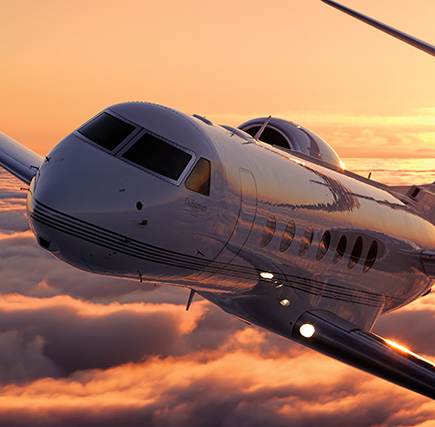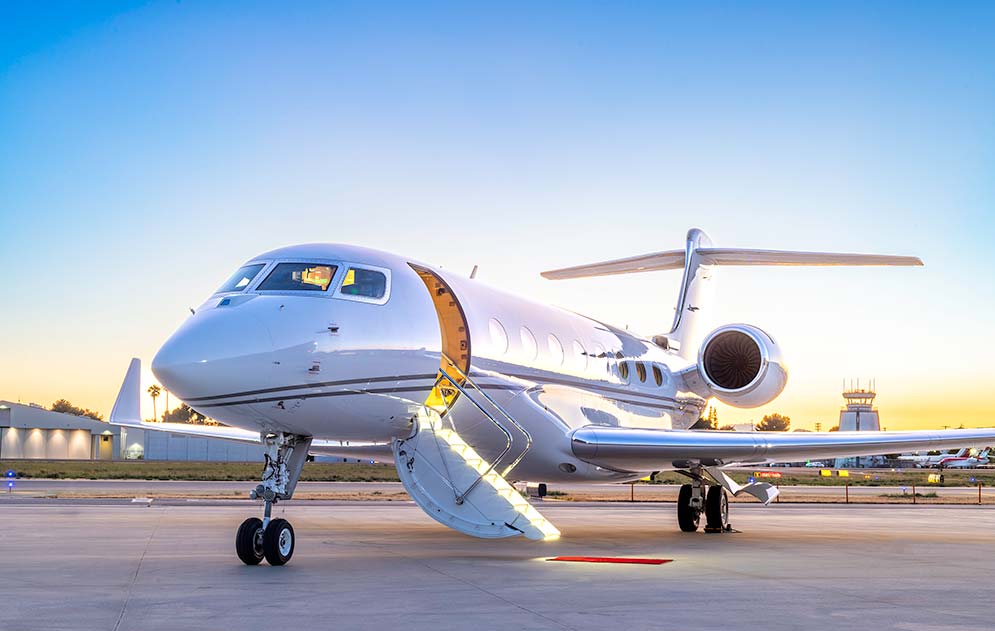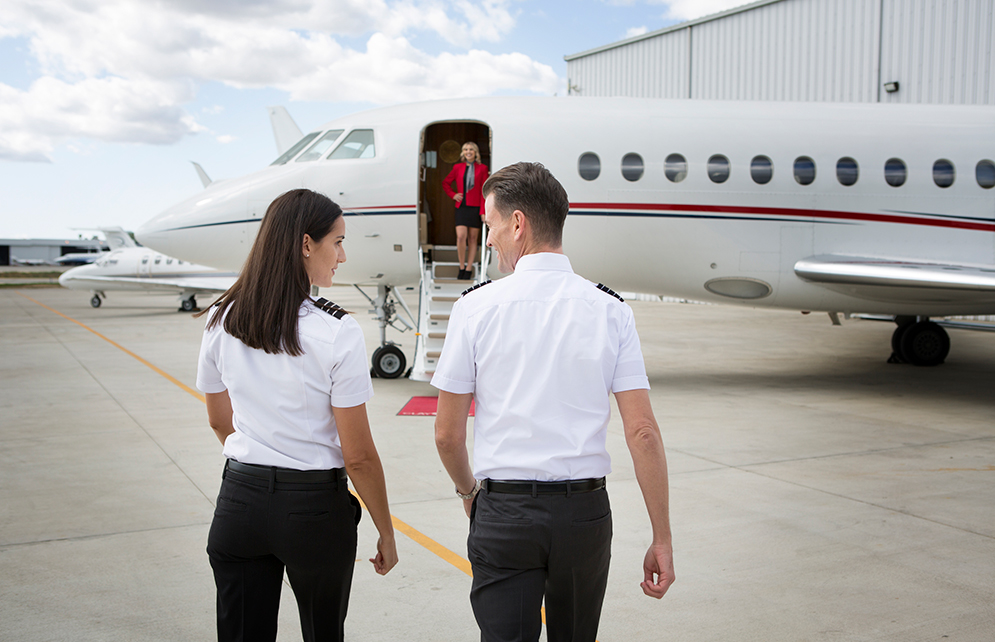
Aircraft of the 21st century — it’s time for really big changes
By Clay Lacy ATP/Helo/CFII – In 2001 Pro Pilot Magazine Editorial Opinion “Outer Marker Inbound”
Boeing 747, Gulfstream II/III/IV, Hawkers, Learjets, Citations and 25 misc type ratings.
Over the nearly 100 yrs since the Wright Brothers flew at Kitty Hawk we’ve seen wonderful advances in aviation technology. These improvements, however, have not been consistent. We’ve had periods of rapid growth in aviation technology and aircraft development, but over the past 3 decades the overall technical progression in aviation has somewhat stagnated.
Back in the early 60s I would have bet everything that I’d be flying supersonic airliners by 1980. I remember talking with Bill Lear back in 1964 about the problems they were having with the Learjet 23. Lear would pull out his briefcase and lay out pictures of a Learjet supersonic business jet (SSBJ) on the table. He wasn’t thinking about the Learjet 24, 28, 29 or 35—he was thinking about building a supersonic business jet, even back then.
Somehow, more than 3 decades later, we still haven’t achieved the SSBJ that Lear visualized and we haven’t had anything really new in airline transport since the Concorde. The Learjet 23 was a major breakthrough, going to FL410 in 13 min right out of the box. But 35 yrs later we’re still flying at the same speeds and performance levels. We seem to be overdue for some real advancement in the bizjet arena.
AVIATION’S GREAT LEAP FORWARD
Aviation advancements were remarkable from the time of the Wright Brothers to the end of WWI. During that time 70,000 aircraft were built and they were being manufactured faster than pilots could be trained. They were made out of wood and every little town in France had a cabinet shop so they could really turn out airplanes.
French aviation pioneer Louis Blériot started a kind of do-it-yourself learn-to-fly school during the early days of WWI. Using Blériot monoplanes with clipped wings that prevented aircraft from taking off, pilot trainees would motor around airfields with the tail off the ground to learn how to control the rudder. When the instructor decided the students could keep the Blériot on a fairly straight course, they would begin training on an airplane with full wings.
Things had slowed by the end of WWI and the next decade was flat in terms of advances. The military were flying biplanes and weren’t making a big push for new technology. Occasionally the military would participate in air races. When Walter Beech wanted to put one of his Travel Airs in these races they wouldn’t let him. He sent a pilot and flew to compete anyway, and ended up beating both the Army and the Navy. That was a wake-up call for the military. They began looking around to procure more modern aircraft— and a period of real innovation followed.
Remember the Curtiss Sparrowhawk? It was a little 420-hp airplane built to be carried inside the 785-ft long Macon and Akron rigid airships of the 20s and 30s. Each airship was capable of carrying 5 of these machine gun-toting Sparrowhawks internally. The aircraft served as both scout planes and defenders of the mothership. The planes were equipped with skyhooks that enabled them to be launched or recovered aboard the airship by means of a trapeze. The airships used trapeze capabilities so effectively that this technology helped push the retractable gear issue.
During the 30s several significant things happened in aviation. Boeing built the first all-metal airliner, the 247, which was quickly followed by the Douglas DC2 and then the DC3. Everyone credits the DC3 as being the first airplane that could make money for the airlines. The military soon went to all-metal aircraft and they had early B17 Flying Fortresses in place by the time WWII started.
At that point, 40 yrs into aviation, we were up to all- metal airliners with 150 kt speeds. And fighters like the North American P51 were flying much faster. I found out for myself how fast P51s would fly during the last unlimited cross-country race held. At 61 in manifold air pressure (MAP), 3000 rpm at 30,000 ft I had a true airspeed of 505 mph.
STAGNATION VS INNOVATION
Here we are at the turn of the century, almost 100 yrs into aviation, and we’re still building 60s-vintage airliners like the Boeing 737 and 747. And the Boeing 757 and 767 aren’t much different. While they’re improved versions, they’re basically the same aircraft— bigger, more fuel efficient, quieter and with better range and payload than the originals—but they don’t fly any faster or higher. The 777 is Boeing’s first true fly-by-wire airliner but it is not in any sense a quantum step ahead in speed or altitude.
It’s the same scenario with business jets. Aircraft have quieter engines and more range but not much change in performance. We’re still building Hawkers and Learjets today that cruise at the same speed as the original models from the 60s. We continue to stop at the water’s edge of the speed of sound.
Have we decided that the cost of improving speed and performance isn’t worth it and that we don’t need to go any faster? I believe that this may be a correct analysis in the case of pleasure travel. Flying is part of the vacation experience and going to Europe from North America is not all that bad. On the other hand, going down to Singapore from North America is a long way—20 hrs plus a couple of hours on the ground if you’re lucky.
The needs of business and pleasure travelers differ. Speed and controlling the transportation process, is important and they pay off. The new ultra-long-range business jets which are currently in production have been a step forward, at least in range, and the price premium is worth it to many users.
We need a Mach 2 SSBJ—maybe even something a little faster. You’d cut the time from Los Angeles to Tokyo to 3.5 hrs and on longer trips you’d reduce travel time by half including ground refueling. If an 8 to 10 passenger Mach 2 SSBJ were available today, at perhaps $75 million, I believe the aircraft would be particularly successful in fractional ownership programs. There are many people who would pay double to cut their travel time in half and they’d be willing to go back to smaller aircraft for supersonic time savings.
Around 2010 we’re likely to have a 1st-generation SSBJ in corporate service. Early-generation SSBJs will probably have a range of no more than 4000 nm with similar costs per mile, and fuel specifics, of early turbojets. They’re certainly not going to be as fuel efficient as a Global Express, Falcon 900EX or Gulfstream V, but the only real advantage to a low fuel burn is to get more range.
We’ll eventually have even faster SSBJs, as well as supersonic transport airliners, which will fly at Mach 2.5 to Mach 3, reducing trip time to just 1/3 of what it is today. Hypersonic aircraft are unlikely before the last half of the century. We will probably need to build special airports for hypersonic transports and they will no doubt have their own set of problems. You may be waiting in New York for a landing slot in Tokyo. The FMS says “OK, blast off,” but if the runway is closed for some reason by the time you get there, you’re facing a big problem.
We can also look forward to an assortment of advanced subsonic business jets and airliners for shorter regional trips. There’s a lot of potential in short take-off airliners and corporate jump-jets which would require less airport real estate.
Engine technology is the primary driver of aircraft design. New engine programs, such as the low-cost, lightweight 700-lb thrust Williams turbofan, will have a major impact on airframe design. They’ll herald a whole new generation of easy-to-fly light jets to replace prop aircraft such as the Beech Baron and 400 series Cessnas. A prop is one of the most dangerous things you can have on an airplane and one day all propellers will be history.
New engine technology like the Williams EJ22 could contribute to a new generation of light jets to replace both piston and turboprop aircraft.
Avionics technology has made wonderful advances recently. Tomorrow’s computer-controlled aircraft may be so intelligent that pilots won’t have to know near as much as they do today. While I believe that we’ll still have pilots aboard passenger aircraft 50 yrs from now, the flight crew job description will be very different.
As aircraft become more computer based, and easier to fly, the basic airmanship we learn today over 3000–5000 hrs won’t be as necessary. US airlines will probably follow the Asian and European abinitio training model and seat 300-hr TT first officers directly aboard flight decks. We may even have airline captains with just 1000 hours TT. Should this be cause for concern? Probably not, according to the safety statistics. Business and airline equipment has become so reliable that pilot proficiency today, particularly in terms of basic airmanship, is not as important as it was 20 and 40 yrs ago.
While pilot situational awareness is still important today, in 10 or 15 yrs onboard computer systems and equipment may be responsible for providing situational awareness and not let the pilot get into trouble. Rather than learning to fly by buzzing around fields in WWI-era impossible-to-fly Blériot aircraft, future pilots may be earning their commercial ratings with a few hundred hours in a virtual reality computerized training device. Then it’s off to FL600 at Mach 3.


